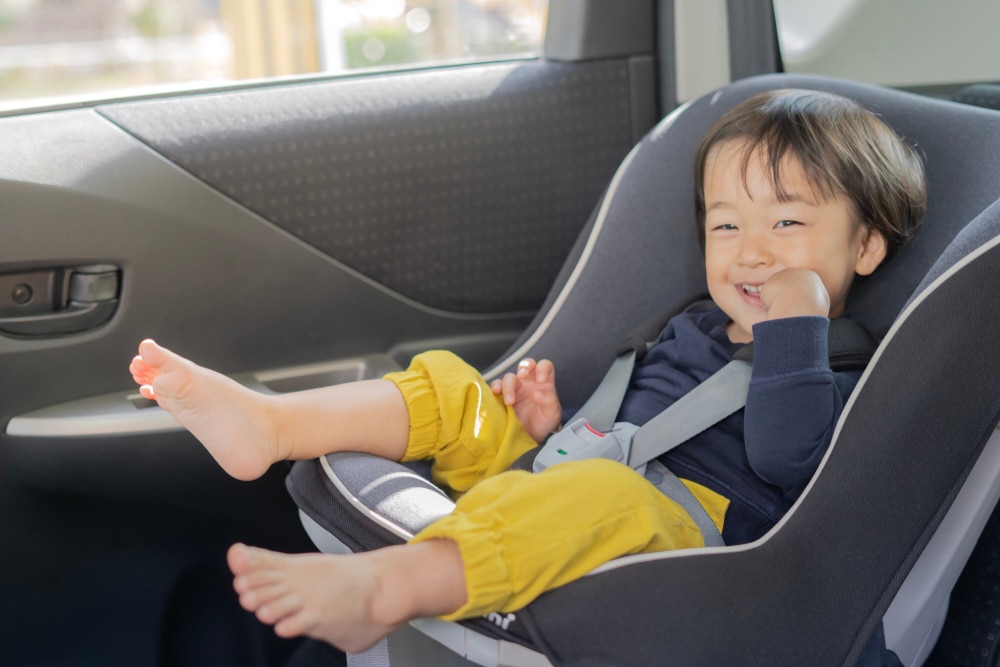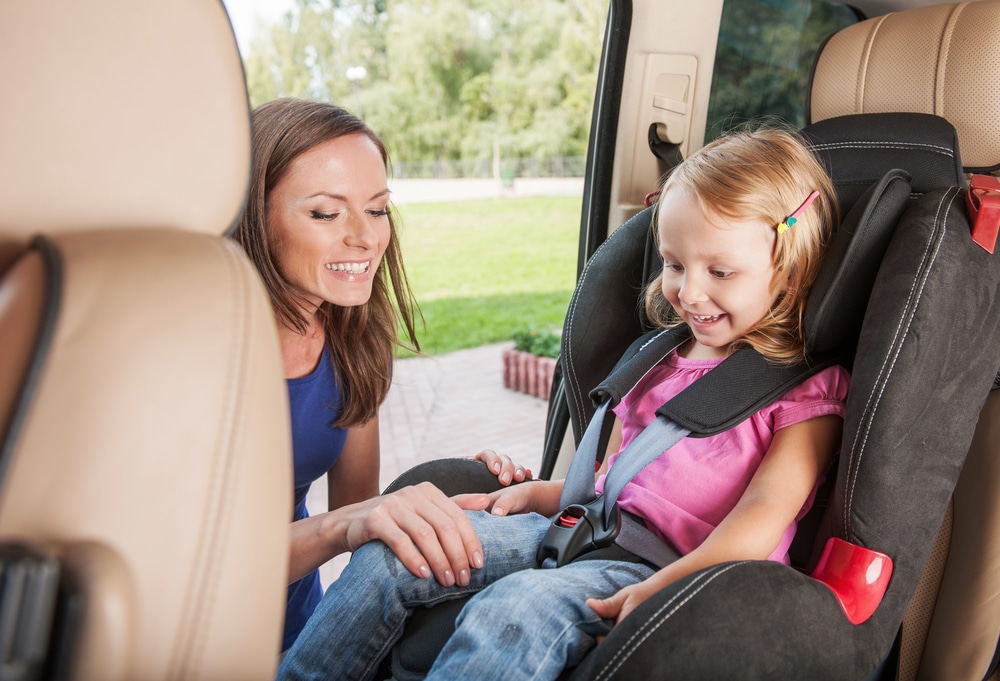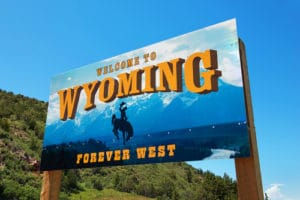Need to know more about Arizona car seat laws? These are relevant mainly for new children’s parents, but failure to follow them could result in significant penalties. Here’s what you should know about them.
Disclaimer: This guide is not legal advice and should not be used as such. While every reasonable attempt has been made to ensure its accuracy, laws may have changed since the last time we updated this page. If you are involved in a legal matter involving Arizona car seat laws, consult a licensed attorney or similarly qualified individual.
Arizona Car Seat Laws: Basic Information
The primary focus of Arizona child seat laws is Section 28-907 of the Arizona Revised Statutes. This section of the law contains fourteen primary components, plus several additional clarifications and explanations regarding car seat laws’ specific requirements.
Infant Seats

Arizona car seat laws (specifically, part A of Section 28-907) mandate that all children who are less than five years old must be properly secured in a child restraint system.
Note that this section of the law does not explicitly mandate car seats, as such. You’ll see this in other places throughout the law as well. However, you can’t simply put together a safety device and call it a child restraint system.
Part N1 of the law mentioned above defines a child restraint system as an add-on, a built-in, a booster seat, a factory-installed built-in, or a rear-facing system (as defined in the Code of Federal Regulations). In practical terms, this means the restraint system must either come with the car or be sold while meeting specific guidelines.
Youth Seats

Part B of the law, as mentioned above, deals with children between the ages of five and eight. They must also be in a child restraint system while the vehicle is being operated, but only as long as they are four feet nine inches tall (or less). If a child is seven years old and five feet tall, this part of the law does not apply.
This section also contains some exclusions regarding model years, but this only matters for cars made in 1971 or before. Even without that, child restraint systems help keep children safe, so they’re worth using.
That’s the central extent of the law as it applies to most people. In other words, the law says, “small children need to sit in proper safety systems.” However, there’s more to car seat laws in AZ than just the basic AZ booster seat law. Here’s the rest of the law and how it might apply to you.
Penalties For Failure To Comply
Arizona state law imposes a penalty of fifty dollars on anyone who violates Section 28-907. However, the fee is waived for people who make a sufficient showing that they’ve equipped their vehicle with a child restraint system as long as they’re in need of it.
In this context, a sufficient showing could include mailing a receipt to the court that proves the purchase of a restraint system, but courts will typically accept other demonstrations of proof as well. For example, if someone gives you a seat, you might take a picture of it and mail that in instead.
All funds gathered from these penalties, minus any relevant surcharges, go to something known as the Child Restraint Fund. This is a fund that other parts of the Arizona government can draw on to purchase child restraints as needed. This is most relevant to foster care and other state-run systems, which are considered responsible agencies under the law.
The fund itself is limited to $20,000. Any funds above that go to the Arizona highway user revenue fund to help maintain the roads within the state.
Getting Information About This Laws
Part I of Section 28-907 requires that hospitals, in conjunction with attending physicians, provide you with information about these laws before releasing the child from the hospital. They must also provide you with information about loaner or rental programs for restraint systems that could be available in the local community.
Keep in mind that this does not require hospitals to give you a restraint system, and it does not mean that you will receive (or be able to rent) a restraint seat. That’s mainly up to the organization running those programs.
Exclusions
Arizona’s laws provide a surprisingly high number of exceptions for people. If you fall into one of these categories, you don’t need to worry about civil fines. However, you should consider looking into alternative safety systems just in case. The exclusions are:
Vehicles Manufactured Without Passenger Restraint Devices
These are relatively rare and mostly consist of older vehicles. However, on rare occasions, you may find a modern vehicle that doesn’t have traditional passenger restraints, thanks to its unusual design. These vehicles have a straight exemption because they aren’t compatible with how most safety devices work.
The Vehicle Is A Recreational Vehicle
If the motor vehicle is a recreational vehicle (defined in Section 41-4001 of Arizona state law), children don’t need to be in a child restraint system while the vehicle is in motion. Many of these vehicles don’t have seatbelts in every place people might sit down, so installing a child safety restraint can be difficult.
However, it is possible to improve the safety of children while you’re in a recreational vehicle, and you should look into options for that depending on your child’s age and height.
It’s A Commercial Vehicle
Commercial vehicles are broadly exempt from the law as well, although you’ll need to have a current commercial driver’s license to benefit from this exemption.
It’s An Emergency
This applies to both parents and authorized emergency vehicles. Broadly speaking, if you’re transporting a child for medical care, then you don’t necessarily have to use a child restraint system for them.
You should do so if the medical emergency allows it, but there are cases where that could do more harm than good. Furthermore, the state of Arizona does not expect you to slow down and reinstall a removed seat when a child is in danger. In essence, solving the problem that exists is more important than protecting a child from a problem that only might happen.
This is the most important section for most people to know. Emergencies do take priority, so you can take your child straight to a care facility without worrying about the regular restraints for them. Do what’s necessary to help your child.
The System Won’t Fit
Finally, if you’re transporting multiple children, the car may not provide enough space for as many child restraint systems as you want to have. Vehicles are exempt if at least one child is restrained and as many others are as restrained as the physical dimensions of the passenger area allow.
Getting More Information
The above explanation does not cover the entirety of Arizona car seat laws. There are other minor guidelines, regulations, and general governmental processes that affect how these laws are administered. However, Section 28-907 contains everything that the average new parents need to understand about the laws.
If you have additional questions about the law itself, speak to a qualified attorney or a similar licensed individual. Only a professional can give you legal advice.
If you need to know more about different types of child restraint systems, contact their manufacturers or sales representatives. Those individuals can generally tell you whether or not a particular system complies with Arizona state law. If you do not know whether a system is safe enough for your child, ask an expert.






